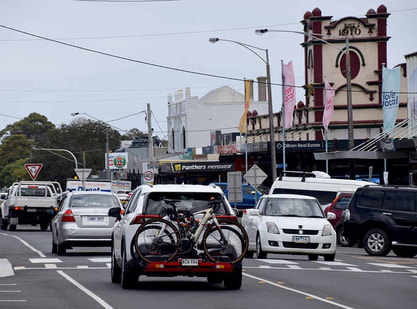 Wonthaggi's growth spares the rest of the shire, but not everyone is
Wonthaggi's growth spares the rest of the shire, but not everyone ishappy about it.
“I don’t agree with the doubling of the size of Cape Paterson … but I think to close the doors completely on Cape Paterson is a short-sighted view.
“I can’t help think of families that have grown up there and their kids have built there, and now their kids are going to have to move out of their town where they’ve lived all their lives.
Cr Tessari, a three-time Bass Coast mayor and a life-long Wonthaggi boy, let a note of bitterness slip when he added: “I’m sure if you were to ask Wonthaggi people who’ve lived here all their lives they would have liked to keep Wonthaggi at the size of 5000 rather than see it grow to 10, 20, 30 thousand.”
On Wednesday councillors voted six to two in favour of recommending that the Planning Minister returns the Cape Paterson boundary to Seaward Drive and does not extend the Ventnor boundary, to the delight of a large section of both communities.
The final council submission on the Bass Coast Distinctive Areas and Landscapes argues that the Wonthaggi North East Precinct Structure Plan, approved last month by the Planning Minister, ensures adequate supply of residential land in Bass Coast for the next 15 years, as required by the State.
Over 5000 homes are expected to be established in the precinct over the next 30-50 years.
The project reinforces Wonthaggi’s role not just as Bass Coast’s major town but as a regional centre for South West Gippsland. And it lifts the burden of development from the rest of Bass Coast’s towns, villages and hamlets, as was made clear from Wednesday’s debate.
When it comes to development, our biggest town has taken one for the shire.
Introducing the motion to support the submission, Cr Leticia Laing said the Wonthaggi North East precinct had significantly resolved the housing supply issue, enabling the council to argue against extending the boundaries of Cape Paterso and Ventnor.
Cr David Rooks said the Ventnor community would be very pleased with the council’s recommendation. “I hope this puts to bed that issue [expansion of the Ventnor settlement boundary] for a number of years now.”
Cr Rochelle Halstead reminded her colleagues that the DAL would provide the vision for the shire for the next 50 years. “If we are serious about providing a range of housing options then land will be required.
“There is the suggestion that the extension of Wonthaggi is enough. I would argue that Wonthaggi NE Precinct will provide housing that is probably limited to a 600sqm block compared to what we’re talking about in Cape Paterson. The possibilities there would be much greater sized blocks, which I feel Bass Coast is scarce in.
“Bass Coast is a rural location. It is not the city. People come to Bass Coast to get away from the hustle and bustle and have space to breathe.”
And she warned that not providing sufficient greenfield development – such as in Cape Paterson – meant infill development in the townships and much higher density.
Cr Michael Whelan took a different view. “Bass Coast has been profligate in the past in its allocation of land, always opening up new land for development. It’s done in a very ineffective way. This notion that we’re going to have all these large developments, as distinct from the infill developments, is in my view quite irresponsible.
“I think we need to be looking at the infill. If you lock the boundaries down that’s what you have to decide. That’s why the neighbourhood character stuff is so important because where should that infill occur? You don’t want it everywhere.
“In respect to Ventnor and Cape Paterson, they are small coastal hamlets. I believe we should not be developing in those sensitive coastal developments beyond what’s already there, where the horse has bolted.
“Those sensitive places should be respected for what they are and protected. And the development should be directed into the likes of Wonthaggi North East.”
Cr Geoff Ellis said the Wonthaggi NE precinct took the pressure off the shire’s small coastal towns. “I think it will preserve the habitat of our critters and our sand dunes and our trees.”